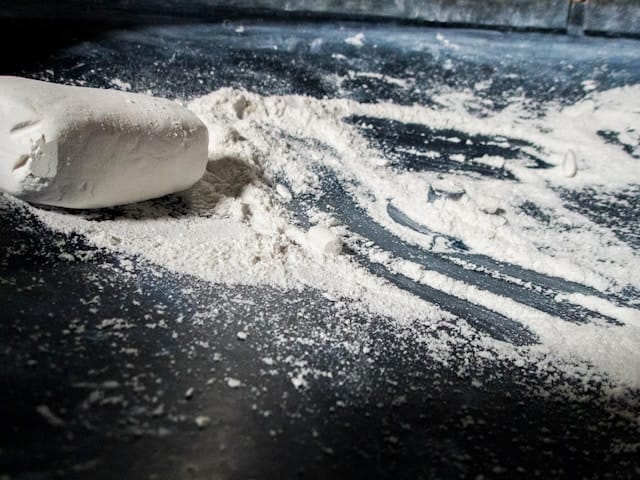Paralegal accused of disguising synthetic drugs in legal files to slip past Phoenix jail staff
Newly released court documents paint a disturbing picture of how a Valley paralegal allegedly tried to sneak synthetic drugs into Phoenix’s 4th Avenue Jail under the guise of legal paperwork.
Investigators say 45-year-old Christopher Byers was arrested last Thursday after his attempt to deliver drug-laced documents to an inmate was uncovered. The arrest followed a jailhouse visit on 14 August, when Byers arrived for a legal meeting and left behind what appeared to be standard case files.
According to detectives, Byers dropped off between 200 and 300 sheets of paper inside an unsealed bag. Jail staff quickly noticed something unusual. Several pages were discoloured, a tell-tale sign of papers soaked in illicit substances. When tested, three sheets came back positive for synthetic cannabis, also known on the street as Spice or K2.
Embed from Getty ImagesAuthorities say the method is far from new. Smuggling drugs through “legal mail” has become a well-worn tactic for inmates and their outside contacts. The paperwork, mixed in with authentic legal documents, often slips past detection because attorney-client privilege restricts how closely staff can inspect such files. Legal mail must also be opened in front of the inmate, giving smugglers an extra layer of cover.
The stakes inside are alarmingly high. Officials estimate that a single sheet of paper laced with synthetic cannabis can fetch $1,500 behind bars, while smaller cuts—typically strips the size of an ID card—can sell for $250 each.
Criminal Defence Attorney David Black, who regularly visits clients in custody, explained why contraband can be difficult to detect. “Attorneys and paralegals don’t go through the same invasive searches that inmates do,” he said. “Paperwork generally isn’t inspected closely because of legal privilege. There’s always a tension between protecting rights and maintaining security.”
When detectives searched Byers’ home, the findings only deepened their suspicions. Investigators say they discovered step-by-step instructions for soaking fentanyl onto paper. They also uncovered evidence of Byers’ communications with multiple inmates through the Arizona Department of Corrections system.
The revelations prompted a broader search of the 4th Avenue Jail. A specially trained K-9 unit alerted officers to further drugs inside the facility, substances that appeared consistent with those Byers allegedly smuggled. Tests confirmed they were also synthetic cannabis.
The Maricopa County Sheriff’s Office acknowledged that overdoses in Valley jails have been rising, underscoring the risks. A prosecutor at Byers’ initial hearing described the reality starkly: “Drug sales within jails and prisons are commonly operated by illegal street gangs, your honour.”
Whether Byers had links to organised gangs remains unclear. What court records do reveal is that he had only been employed as a paralegal for one month before the arrest, and that his background includes a lengthy criminal record, including past drug offences.
Commenting more broadly, Black noted the variability in the profession. “There are paralegals just starting out, some certified with decades of experience, and then others who may call themselves paralegals with very little training,” he said.
For now, Byers faces a severe legal battle of his own. In Arizona, smuggling drugs into a prison counts as contraband trafficking, a Class 2 felony carrying the potential for significant prison time.
The case highlights both the ingenuity and the dangers of contraband operations in correctional facilities—where something as simple as a sheet of paper can become a deadly delivery system.
